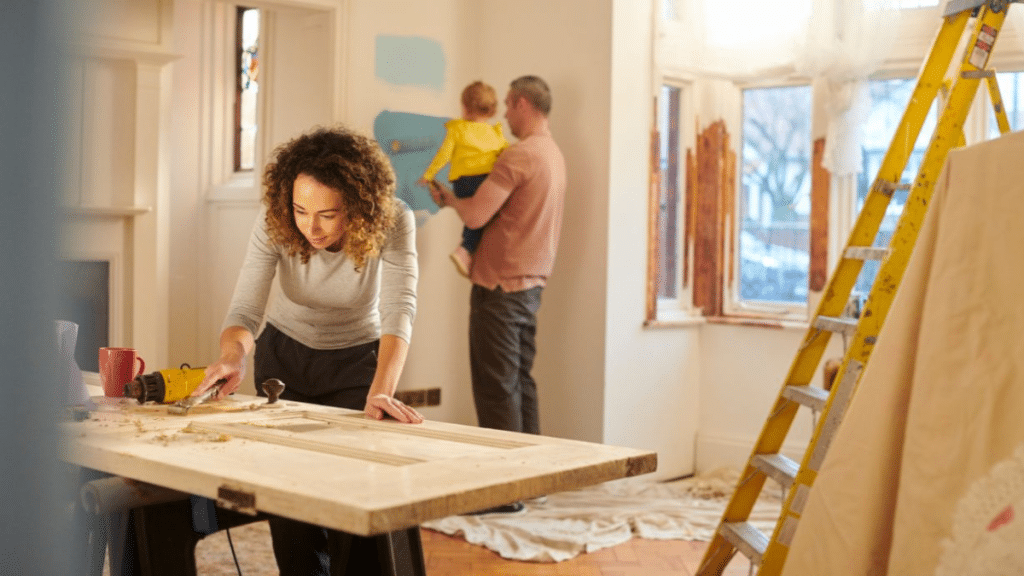Buying a fixer-upper is like adopting a scruffy, lovable rescue dog: it takes work, patience, and more than a few surprise visits to the professionals. But if you’re up for the challenge, the rewards can be incredible—customized finishes, built-in equity, and the satisfaction of transforming a space to match your exact vision.
Still, fixer-uppers come with their fair share of baggage. To help you avoid costly mistakes, here’s a breakdown of what to keep an eye out for before and after you sign the dotted line.
Pest Control Should Be a Top Priority
If there’s one thing you don’t want sharing your new home, it’s an army of uninvited guests with six—or eight—legged. When it comes to buying an older or neglected home, pest control should be one of your very first calls. Why? Because pests can:
- Compromise the structural integrity of the home (think termites or carpenter ants).
- Damage insulation, wires, or pipes (hello, rodents!)
- Pose health hazards through droppings, bites, or disease.
- Be difficult and expensive to remove once a renovation begins.
Common Signs of Pest Issues to Look Out For
- Droppings in cabinets, basements, or attics.
- Chewed wires or insulation.
- Musty or ammonia-like odors (could be rodent urine or roaches).
- Mud tubes or discarded wings (a red flag for termites).
- Scratching sounds from inside the walls, especially at night.
The Best ‘Take Action’ Plan
- Schedule a pest inspection before closing.
- Get quotes for any necessary remediation.
- Budget for ongoing treatments if the home is in a high-risk area.
- Look up pest control near me to find licensed local professionals.
Hidden Structural Problems Can Wreck Your Budget
On the surface, a fixer-upper might just look like it needs a little paint and new floors. But behind the walls, problems could be lurking. Don’t make the mistake of underestimating the potential for major structural issues. Top structural concerns include:
- Cracks in the foundation.
- Sagging rooflines.
- Rotting support beams.
- Outdated or damaged plumbing and electrical systems.
Watch For Warning Signs
- Uneven floors or doors that stick.
- Water stains on ceilings or walls.
- Mold or mildew (especially around basements or windows).
- Flickering lights or outdated fuse boxes.
What To Do
- Hire a certified home inspector—don’t skip this step!
- Bring in specialists (electricians, plumbers, structural engineers) for second opinions.
- Get repair estimates before you buy, and add at least 15-20% for surprises.
Beware the Hidden Cost of Permits and Code Compliance
Fixer-uppers are usually full of “quirky charm”—and sometimes full of outdated, non-compliant building work. Renovating a home often means bringing everything up to modern code. That can get expensive and complicated. Renovations that typically require permits:
- Electrical upgrades or rewiring.
- Structural changes (knocking down or building walls).
- HVAC system replacements.
- Major plumbing work.
- Pest control fumigation in some areas.
Why This Matters
- Skipping permits can result in stop-work orders or fines.
- Unpermitted work may reduce your home’s value or void insurance.
- You could be liable for safety issues that arise post-sale.
What You Can Do
- Check with your city or county’s permitting office early on.
- Budget time for permit approvals and inspections.
- Don’t assume previous owners pulled permits—verify everything.
Environmental Hazards Could Put Your Health at Risk
Many older homes—especially those built before the 1980s—harbor hidden environmental hazards that pose serious health risks if not handled properly. Common hazards include:
- Lead paint: Found in homes built before 1978, especially on window trim and doors.
- Asbestos: Common in insulation, old vinyl tiles, and textured ceilings.
- Mold: Often hidden behind walls or under flooring, especially in homes with previous leaks.
- Pests and droppings: Rodent urine and cockroach debris can exacerbate asthma and allergies.
Prevention Tips
- Ask your inspector to test for mold, asbestos, and lead.
- Hire licensed professionals for removal—don’t DIY.
- Include cleanup and remediation in your renovation budget.
- Run a quick search for pest control near me and contact specialists who understand how to safely treat homes with environmental sensitivities.
Budget for the Unexpected
Even if you do all the right inspections, it’s still wise to build in a buffer. Fixer-upper projects are notorious for going over budget and over timeline.
Unexpected costs can include:
- Hidden water damage.
- Delays due to permitting issues.
- Price increases on materials or labor.
- Discovering new pest issues mid-renovation.
Smart budgeting strategies:
- Add 10–20% to your initial renovation estimate.
- Prioritize urgent repairs (structural, electrical, pest control) before cosmetic changes.
- Keep a cash reserve for surprises.
- Line up multiple contractor quotes and check references.
Don’t Forget the Long Game
While it’s easy to focus on tearing out shag carpet or updating cabinets, your investment in a fixer-upper should be strategic. Think beyond aesthetics to long-term value.
Things to focus on:
- Curb appeal and landscaping (especially important in pest-prone areas).
- Energy efficiency (new windows, insulation, HVAC).
- Modern systems (plumbing, electric, roof).
- Preventative services like regular pest treatments, to protect your hard work.
Fixer-uppers can turn into money pits or dream homes. It all depends on the prep work and ongoing care.
A Fixer-Upper Can Be Worth It—If You’re Prepared
Buying and renovating a fixer-upper can be one of the most rewarding experiences in real estate—but only if you go in eyes wide open. From hidden hazards to sneaky infestations, what you don’t see can hurt you. So before you fall in love with a vintage gem, do your homework.
Schedule the right inspections, talk to contractors, and search for pest control near me to get ahead of any creepy-crawly surprises. With proper planning, smart budgeting, and a little grit, your fixer-upper might just become your forever home.
Sponsored blog post
